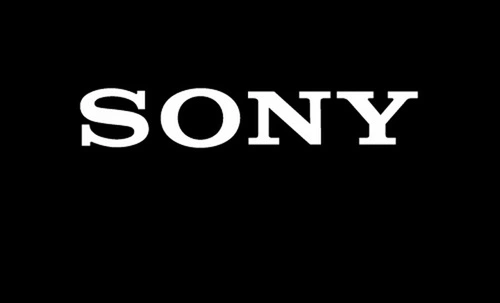Sony Corporation, a Japanese multinational conglomerate, has long been a household name in consumer electronics, entertainment, and gaming. Founded in 1946, Sony has grown to become a leader in various sectors, including electronics, gaming, music, movies, and financial services. The company is well-known for its iconic products like the PlayStation gaming consoles, BRAVIA TVs, and Alpha cameras, as well as its vast media empire, including Sony Pictures and Sony Music. However, as Sony navigates through a highly competitive and rapidly evolving technological landscape, it faces both opportunities and challenges. This SWOT (Strengths, Weaknesses, Opportunities, Threats) analysis provides insights into Sony’s current market position and future outlook in the global tech and entertainment industries.

Strengths
1. Strong Brand Equity and Global Presence:
Sony’s brand is synonymous with quality, innovation, and reliability, which has helped it build a strong reputation globally. The Sony brand is recognized across the world, especially in markets like North America, Europe, and Asia, giving it a competitive edge in attracting consumers and partners. This global presence allows Sony to maintain a broad customer base and capture demand in diverse markets, providing resilience during economic fluctuations.
2. Diversified Business Portfolio and Revenue Streams:
Sony has a diversified business portfolio that spans gaming (PlayStation), entertainment (Sony Pictures and Sony Music), electronics (BRAVIA TVs, cameras), and financial services. This diversification enables Sony to balance risks and reduce dependency on any single segment. Sony’s leading position in gaming and entertainment contributes significantly to its revenue, providing stability in times when other sectors may face challenges.
3. Market Leadership in Gaming with PlayStation:
Sony’s PlayStation brand is a dominant player in the global gaming market, particularly with its PlayStation 5 (PS5) console. The PS5 launch has been a significant success, with high demand across regions and consistent engagement in its online gaming ecosystem, PlayStation Network. The gaming segment, particularly with its exclusive titles and extensive third-party support, is one of Sony’s most profitable ventures, reinforcing its stronghold in the gaming industry.
4. Strong Intellectual Property (IP) and Content Assets:
Sony owns extensive intellectual property across its entertainment divisions, including blockbuster films, popular music, and exclusive gaming titles. Sony Pictures and Sony Music are leaders in their respective fields, producing content that generates substantial revenue and brand loyalty. This vast content library also strengthens Sony’s position as digital streaming and subscription-based services gain traction, providing opportunities for cross-platform synergy.
Weaknesses
1. Declining Market Share in Consumer Electronics:
Sony, once a leader in consumer electronics, has seen a decline in market share, particularly in TVs, audio products, and smartphones. The consumer electronics segment is highly competitive, with strong players like Samsung, LG, and Apple dominating market share in key categories. This decline in consumer electronics reduces Sony’s market presence in some regions and weakens its competitive edge in a sector where it was once an industry leader.
2. High Dependence on the Gaming and Entertainment Segments:
While Sony’s diversification is a strength, it is heavily reliant on the gaming and entertainment divisions for a significant portion of its revenue. Any downturn in the gaming market, such as decreased demand for consoles or increased competition, could impact Sony’s overall financial performance. The reliance on these segments limits Sony’s revenue diversification and exposes it to risks associated with market saturation and changing consumer behavior.
3. Limited Innovation in the Smartphone Market:
Sony’s smartphone division has struggled to keep up with competitors like Apple, Samsung, and newer entrants like Xiaomi and OnePlus. Sony’s Xperia line, once a popular choice, has lost significant market share due to limited product innovation, higher pricing, and competition from more affordable and feature-rich alternatives. The smartphone division’s weak performance affects Sony’s position in the mobile electronics segment, limiting its potential for growth in one of the fastest-growing tech markets.
4. High Operating Costs and Dependence on Seasonal Sales:
Sony’s diversified business model, while beneficial for risk management, is also resource-intensive. The high operating costs, particularly in R&D for electronics and gaming, put pressure on profit margins. Additionally, Sony’s performance in sectors like gaming and electronics is often dependent on seasonal sales, especially around holiday periods, creating revenue fluctuations and impacting financial stability during off-seasons.
Opportunities
1. Expansion in the Gaming Industry and PlayStation Ecosystem:
The gaming industry is experiencing strong growth, with a projected increase in digital gaming, eSports, and cloud gaming. Sony can leverage this trend by expanding the PlayStation ecosystem, introducing more exclusive titles, and enhancing its PlayStation Now and PlayStation Plus services. Developing a more robust cloud gaming platform or exploring virtual reality (VR) gaming opportunities can further strengthen Sony’s position as a leader in gaming.
2. Growth in Streaming Services and Digital Content Demand:
The demand for streaming services and digital content has surged, accelerated by the COVID-19 pandemic and changing consumer preferences. Sony’s vast library of films, music, and gaming content positions it well to expand in this area. The company could capitalize on these assets by creating new subscription-based platforms, licensing content to other streaming services, or enhancing partnerships to reach a broader audience.
3. Expansion in Emerging Markets and Digital Services:
Sony has the opportunity to expand its presence in emerging markets, such as India, Southeast Asia, and parts of Africa, where demand for affordable consumer electronics, gaming, and digital content is rising. Additionally, with an increasing demand for digital services, Sony can explore offerings like online learning, entertainment-on-demand, and affordable electronic devices tailored for emerging market consumers. By focusing on localized content and pricing, Sony can capture a new customer base in these regions.
4. Development in 5G and Artificial Intelligence (AI):
With the global rollout of 5G and advancements in AI, Sony has the opportunity to innovate across its business segments. In consumer electronics, Sony can introduce 5G-compatible devices and enhance smart home solutions. In gaming, 5G will support better mobile and cloud gaming experiences, enabling Sony to expand its gaming services. AI-driven solutions can also improve product features, enhance content recommendations, and optimize customer engagement, making Sony’s products more appealing in the tech-driven market.
Threats
1. Intense Competition Across Core Segments:
Sony faces stiff competition across all its core segments, including gaming, electronics, and entertainment. Major players like Microsoft and Nintendo pose challenges in gaming, while Samsung, LG, and Apple are competitors in electronics. In entertainment, Sony contends with established players like Disney, WarnerMedia, and Universal. This intense competition requires Sony to continuously innovate and invest in marketing, which impacts profit margins and increases business risk.
2. Rapid Technological Changes and Short Product Cycles:
The tech and entertainment industries are characterized by rapid technological advancements and short product lifecycles. Failing to keep pace with new technologies, such as augmented reality (AR), virtual reality (VR), or advanced AI, could hinder Sony’s ability to remain competitive. Additionally, the short product cycles in electronics and gaming mean that Sony must frequently release new products, which increases R&D costs and creates pressure to continuously innovate.
3. Dependence on Third-Party Content and Licenses:
In the entertainment sector, Sony depends on third-party content licenses and partnerships to enrich its offerings. Any disruption or change in licensing terms can impact Sony’s content library and reduce its competitiveness in the streaming market. Additionally, the success of the gaming division is partly reliant on third-party game developers who create titles for the PlayStation platform. Any shift in developer loyalty could impact the exclusivity and appeal of the PlayStation ecosystem.
4. Economic Uncertainties and Exchange Rate Fluctuations:
As a global company, Sony’s revenue and profitability are affected by economic conditions and currency exchange rates. Economic slowdowns in key markets can reduce consumer spending on non-essential items like electronics and entertainment, impacting Sony’s sales. Additionally, fluctuations in exchange rates, particularly between the Japanese yen and foreign currencies, can impact Sony’s international revenue and cost structure.
Future Outlook
The future outlook for Sony is promising, given its diversified portfolio and strong brand presence across gaming, entertainment, and consumer electronics. The gaming division, led by PlayStation, is a key growth driver, with the potential to expand into VR, cloud gaming, and subscription services. As the gaming industry grows, Sony can leverage its established brand and large user base to capture demand from gamers worldwide.
Sony’s vast content library across movies, music, and games positions it well to capitalize on the growing trend of digital content consumption and streaming services. The company could explore launching its own streaming platform or form strategic alliances to monetize its content library. Furthermore, advancements in 5G will support Sony’s expansion into mobile gaming and connected devices, enhancing its gaming and electronics offerings.
However, to stay competitive, Sony must address its weaknesses and adapt to industry changes. Revitalizing its consumer electronics segment through innovation, particularly in smart home solutions and AI-driven devices, could help Sony regain market share in a highly competitive environment. Strengthening its smartphone division with competitive pricing and advanced features could also improve its market standing in the mobile space.
Additionally, Sony should prioritize digital transformation and continue to invest in R&D to keep pace with emerging technologies. By integrating AI, IoT, and 5G capabilities across its product range, Sony can deliver enhanced user experiences, improve operational efficiency, and remain a market leader in key sectors.
In conclusion, Sony’s strengths in brand equity, diversified offerings, and stronghold in gaming and entertainment provide a solid foundation for growth. By capitalizing on opportunities in digital content, gaming expansion, and emerging markets, Sony can secure its position as a global leader in tech and entertainment. With a strategic focus on innovation, market diversification, and customer engagement, Sony is well-positioned to navigate industry challenges and drive sustainable growth in a rapidly evolving market.

